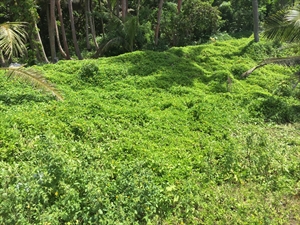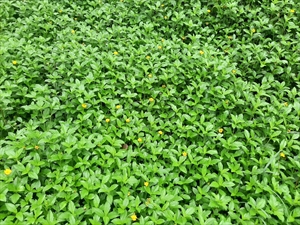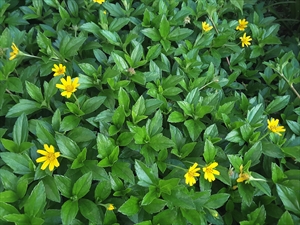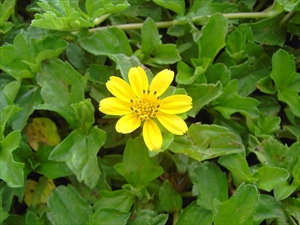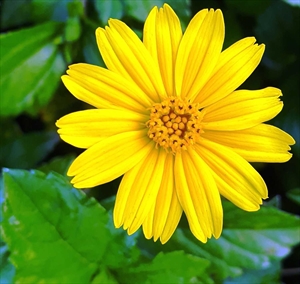- Widespread. Africa, Asia, North, South and Central America, Caribbean, Europe, Oceania. In most Pacific islands.
- Important invasive, creeping, perennial weed of forests, forest margins, open woodlands, wetlands, roadsides, waste areas, and coastal vegetation, forming extensive, dense, ground cover, crowding out other species.
- Up to 70 cm tall; stems green, up to 2 m long, sometimes hairy. Leaves, three lobes (centre one larger), paired along stem, glossy, with saw-like margins, without leaf stalks. Flowerheads, bright yellow, daisy-like, borne singly off side branches, 20-30 mm across, each with 8-13 flowers at the margin, with yellowish petal-like leaves; smaller flowers at the centre.
- Spread: stems or stem fragments (moved in waste or flood water) that readily form roots; moved as an ornamental.
- Biosecurity: high risk of introduction. In Australia, 'restricted invasive plant': do not release into environment, give away or sell. Among 100 of World's Worst Invasive Alien Species (IUCN, 2020).
- Biocontrol: little known.
- Cultural control: hand-pulling; slashing; removing top few cm of soil.
- Chemical control: in Australia: glyphosate; metsulfuron-methyl (and Fiji); glyphosate + metsulfuron-methyl. Elsewhere: 2,4-D; dicamba; triclopyr.


